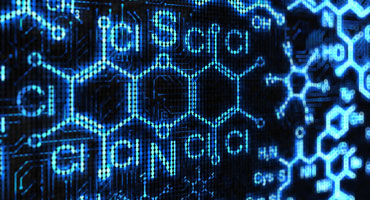Spectroscopy and atmospheric chemistry
Computational chemistry

Computational chemistry is an area of chemistry that allows the study of chemical problems using a computer. Being able to accurately model molecular structures and reactions in chemistry can help describe many physically unobservable phenomena as well as resolve ambiguity in experimental results. With the capabilities of modern computers, accurate simulations of almost any molecule or reaction type is a very real prospect, even for large biological molecules.
In the spectroscopy and atmospheric chemistry group, computational chemistry is used to investigate a wide range of chemical systems including the solvation of salts, van der Waals complexes, molecular ions and molecules of astrochemical interest such as HPCO and HSiNCO.
Computational chemistry allows the determination of properties such as molecular structures, energies, transition states, chemical reactivity, and the prediction of infrared spectra. These calculated properties can then be used to help in the interpretation of experimental results.
Selected publications
- “Infrared Spectroscopy of a Small Ion Solvated by Helium: OH Stretching Region of HeN-HOCO+ ”, J. A. Davies, N. A. Besley, S. Yang, A. M. Ellis, J. Chem. Phys. 151, 194307 (2019).
- “An Investigation of Atropisomerism in Ortho-imide Substituted 1,3-benzoxazine by Experimental NMR and DFT Calculations”, K. Zhang, Y. Liu, Z. Shang, C. J. Evans, S. Yang, J. Phys. Org. Chem., 32, 3926 (2019).
- “CF3+ and CF2H+: New Reagents for n-alkane Determination in Chemical Ionisation Reaction Mass Spectrometry”, R. S. Blake, S. A. Ouheda, C. J. Evans, P. S. Monks, Analyst 141, 6564-6570 (2016).
- “Infrared spectroscopy of salt-water complexes”, J. Tandy, C. Feng, A. Boatwright, G. Sarma, A. Sadoon, A. Shirley, N. Das Neves Rodrigues, E. M. Cunningham, S. Yang, A. M. Ellis, J. Chem. Phys. 144, 121103 (2016).